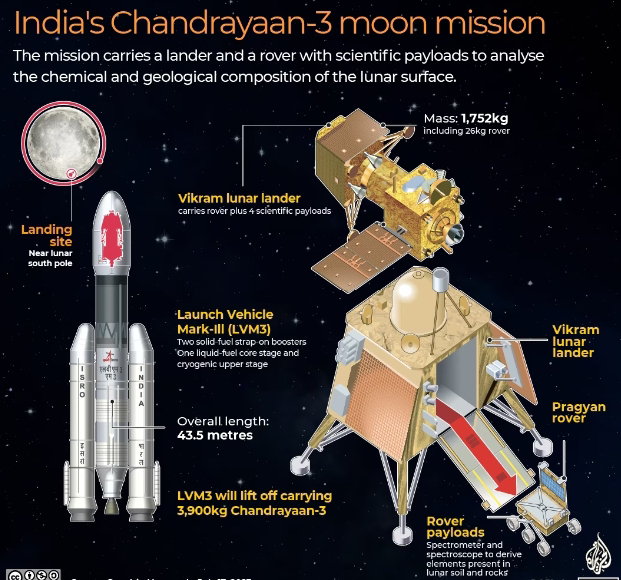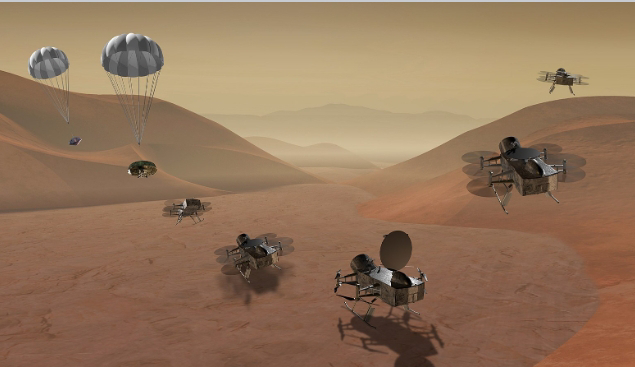Chandrayaan-3: India's Ambitious Leap Towards Lunar Exploration
Introduction
Chandrayaan-3, the third lunar mission by the Indian Space Research Organisation (ISRO), represents India's relentless pursuit of scientific knowledge and space exploration. Following the remarkable success of Chandrayaan-1 and Chandrayaan-2, this mission aims to build upon past achievements, strengthen ISRO's capabilities, and pave the way for future lunar endeavors. Chandrayaan-3 holds the promise of unlocking more mysteries of the Moon, pushing the boundaries of space research, and propelling India to the forefront of lunar exploration.
Background
The Chandrayaan program was initiated by ISRO in the early 2000s with the objective of conducting scientific investigations of the Moon. Chandrayaan-1, launched in 2008, was a groundbreaking mission that made several significant discoveries, including the detection of water molecules on the lunar surface. Building on this success, Chandrayaan-2, launched in 2019, had the ambitious goal of landing a rover, Vikram, on the lunar south pole. Although the lander faced challenges during its descent and couldn't accomplish a soft landing, the orbiter continues to function exceptionally well, providing invaluable data.
Chandrayaan-3 Mission Objectives
The Chandrayaan-3 mission, which was initially slated for launch in 2022 but delayed due to unforeseen circumstances, has a renewed focus on achieving a successful landing on the Moon. The primary objectives of the mission are as follows:
1. Lunar Landing: Chandrayaan-3 aims to perfect the soft landing of a lander on the lunar surface, particularly in the region near the south pole of the Moon. This area is of significant scientific interest due to its potential water ice deposits.
2. Rover Deployment: The mission will carry a rover, similar to the one planned for Chandrayaan-2, to conduct in-situ analysis, gather data, and enhance our understanding of the lunar surface composition.
3. Scientific Exploration: Chandrayaan-3 will conduct various scientific experiments, such as studying the lunar soil, analyzing the distribution of elements and minerals, and mapping the topography of the Moon's surface.
4. Technology Demonstration: The mission will serve as a testbed for new technologies and landing techniques that could be crucial for future lunar missions, including India's aspirations for manned lunar exploration.
Challenges and Preparations
Lunar exploration is no easy feat, and ISRO acknowledges the challenges ahead. Learning from the experiences of Chandrayaan-2, the Chandrayaan-3 team is meticulously reviewing and refining the mission plan to ensure a successful landing. The communication and navigation systems, landing algorithms, and overall operational procedures are undergoing rigorous scrutiny and testing.
ISRO has also been collaborating with other space agencies and institutions to access their expertise in lunar missions, sharing knowledge, and increasing the chances of mission success. The spirit of international cooperation in space exploration is evident, with many countries eager to contribute and participate in Chandrayaan-3's scientific objectives.
Importance of Chandrayaan-3
Chandrayaan-3 holds immense significance for India and the global scientific community. Successfully landing a rover on the lunar surface will mark a major milestone for India's space program, proving its technological prowess and enhancing its reputation as a space-faring nation. Moreover, the mission's scientific findings could contribute to our understanding of the Moon's geological history, its resources, and its potential as a stepping stone for future space missions, including human exploration.
The mission will also have a positive impact on India's economy and inspire young minds to pursue careers in science, technology, engineering, and mathematics (STEM) fields. The advancements made during Chandrayaan-3 will inevitably trickle down to various industries, fostering innovation and driving technological growth within the country.
Conclusion
Chandrayaan-3 represents ISRO's determination to continue exploring the cosmos and expand humanity's knowledge of the universe. It is a testament to India's dedication to scientific progress and a reaffirmation of the nation's commitment to space exploration. As the launch date draws near, the excitement surrounding Chandrayaan-3 continues to grow, and the eyes of the world will be fixed on the Moon as India's spacecraft embarks on its journey to uncover more secrets of our celestial neighbor.





No comments:
Post a Comment